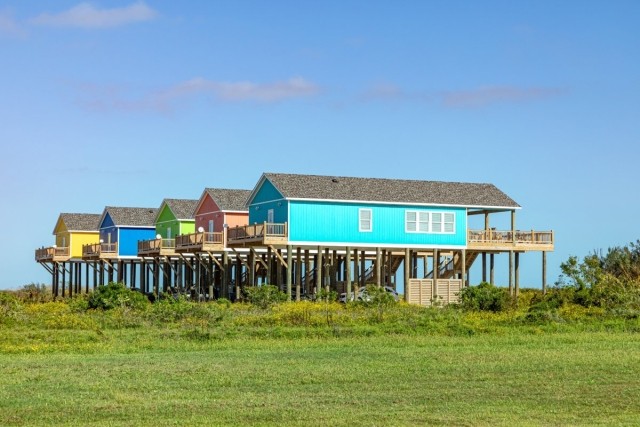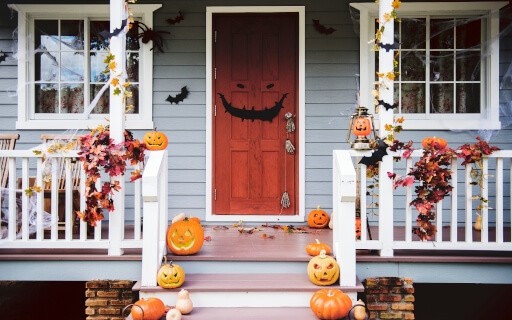Conducting routine property inspections are one of the best ways to make sure your rental meets the safety standards mandated by state and local rental laws. These inspections will not only protect your investment and your rental income, but your tenants as well. To get started, create a rental inspection checklist for each property you own and update it as you inspect the property. There are certain items you should be looking for, so be sure to answer these eight questions as you conduct your walk-through.
1. Does Your Rental Have GFI Outlets?
GFI (ground fault interrupting) outlets have been required by the National Electrical Code since 1971, and over the years, it expanded the list of locations where GFIs should be installed. These locations include kitchens, bathrooms, laundry rooms, and anywhere outside. Many older rentals don’t have these safety devices, which increases the risk of shocks and fires. If a non-GRI outlet were to overheat and catch fire in a place where a GFI is required by law, there’s a chance insurance won’t cover the damage.
As a landlord, you don’t necessarily have to retrofit all non-GFI outlets in a kitchen or bathroom. You can simply install a GFI breaker in the main panel, or you can locate the first outlet on the circuit and replace it with a GFI. If it’s properly wired, it will protect all downline outlets by tripping whenever one of them detects a ground fault. Installing GFI outlets will keep your rental property up to code and safer for your tenants.
2. Are There Smoke Detectors?
Most states have laws regarding smoke alarms, so it’s important to become familiar with your local mandates on the matter. State or local regulations typically specify where the smoke detectors should be. To keep your smoke detectors in working order, it’s recommended to check them yearly by pushing the test button on each device to ensure the alarm sounds. If a renter complains of chirping noises coming from the smoke alarm, it’s because the battery is weak. This means the smoke alarm may not function in an emergency, so it’s important to change the batteries as soon as possible and re-check the device.
Many states also require carbon monoxide detectors in residential units. To avoid having to keep track of both smoke and carbon monoxide detectors, consider installing a combination unit.
3. Are the Outdoor Railings Safe?
If your rental property has a deck or balcony, the railings need to be at least 36 to 42 inches high, depending on whether the local governing authority relies on the International Residential Code or the International Building Code. The railings are also required to withstand a minimum shear force, which is also specified by code.
Wood railings are commonly used for decks, but they tend to deteriorate over the years. The wood rots and the bolts holding the posts to the deck fascia become loose. Because of this, it’s vital to check the railings on your deck or balcony every year. Be sure to tighten loose fasteners and replace rotting wood.
4. Are the Stairways and Walkways Safe?
You can’t prevent every accident, but you can minimize the risk of one occurring by keeping your rental property up to date on safety standards, and that includes stairways and walkways. By keeping stairs and paths in good repair, you can hopefully avoid your tenants or visitors slipping or falling on any of your stairways or walkways. Start by replacing rotted wood on wooden staircases and fixing cracks on concrete staircases before they widen and turn into safety hazards. Painting stairs and walkways with a non-slip coating is a good way to lessen loss of traction in wet weather as well.
5. Do the Doors and Windows Lock Properly?
As a landlord, it’s your responsibility (mandated by law) to provide safe and secure housing for tenants. If a burglary or break-in happens in your occupied rental property, you run the risk of a tenant bringing you to court over the matter. To avoid this possibility, it’s important to check that the doors and windows in your rental lock properly.
A secure exterior door will have a locking lockset and a deadbolt. Re-key the locks or change them with every tenant turnover to eliminate the circulation of spare keys. Even better, equip the doors with electronic or combination locks. Try to discourage renters from duplicating keys and keep a log of the keys you hand out (which should only be to tenants). To add an extra level of security, consider installing an alarm system that’s triggered by any door or window entry. This will protect your investment and your tenant.
6. Are There Signs of Lead-Based Paint?
If your rental property was built before 1978, you need to check the unit for lead-based paint. Before that date, lead was a common ingredient in interior paint. But because it has now been deemed unsafe, it poses a threat to anyone who inhabits the unit. It’s in your best interest, as well as the interest of your tenants, to test painted walls and woodwork for lead. If you get a positive reading, consult a remediation expert as soon as possible to determine the best way to move forward. According to federal law, you must disclose the presence of lead paint to your tenants. To protect your investment and your tenants, it’s best to properly remove the paint as soon as you can.
7. Are There Signs of Pest Infestation?
The presence of pests such as mice, rats, termites, ants, and cockroaches make your rental unsanitary. These pests can spread disease and generally lower safety standards in the rental. It’s possible for tenants to attract pests in the unit by leaving food around or failing to clean up regularly, but it’s ultimately the landlord’s responsibility to get rid of them. To prevent a pest infestation, consider hiring a local pest control company to treat the unit on a regular basis and include the cost in the rent or as a monthly fee.
8. Are the Appliances in Working Order?
As the landlord, it’s your responsibility to inspect and maintain appliances if you provide them. For the sake of fire safety and dryer performance, remove lint from the trap and vacuum the inside of the duct. Afterwards, go to the exterior of the unit and remove the exterior vent cover to check for lint buildup. Clean the exterior vent with a vacuum if you can’t feel a steady stream of air from the vent opening when the dryer is on. When inspecting the washing machine, be sure to check the lint trap. The water heater also needs to be inspected, and it’s important to check for leaks. You should flush the water heater every three to five years to prevent leaks and maintain its performance. Other included appliances such as refrigerators, dishwashers, and HVAC units should be routinely inspected as well to maintain safety standards.
Make Note of Any Potential Safety Issues in the Lease Agreement
If you find any issues that lower safety standards in your rental property, it’s vital to handle them as quickly as possible. But until you do, the law requires that you disclose these issues in the lease. To make sure your lease is in compliance with state laws and local ordinances, you can use Apartments.com to generate your lease agreement. The lease will be fully customizable to fit your property and your standards while upholding important regulations. Tenants need to be aware of the rental property’s condition before they sign the lease and move in. For the safety of your tenants and the well-being of your investment, try to complete all necessary repairs beforehand.











